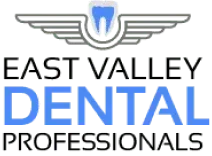Many people want to know whether Invisalign or traditional braces are the way to go for themselves or their children. The answer is that both types of treatment are good for certain situations and people. We’ll explore the pros and cons of each, but in general, there are some basic differences. To begin with, if your teeth are very crowded or require rotation or vertical movements, braces are likely to be required because Invisalign aligners cannot treat some of these conditions. The other major differences include appearance, length of treatment, and cost. Invisalign aligners are truly invisible, while braces involve metal or tooth-colored brackets and wires. And finally, Invisalign treatment can cost more than braces, but the length of treatment is normally just six to eighteen months, where braces usually take two to three years.
Here’s a chart to help you get a feel for the major differences:
| Comparison Chart | Invisalign | Braces |
| Treatment is best for | Simple cases w/o crowding | More complex cases |
| Appearance | Invisible aligners | Metal brackets and wires |
| Average treatment costs | About $5,000 | $1,800 to $6,000 |
| Office visits | About every 4 to 8 weeks | Every 4 weeks |
| Dental hygiene | Remove to eat, brush, floss | Brush and use water pick |
| Possible problems | Stains | Cracks, decay, sores |
Who is a Candidate for Invisalign and Braces?
Your dentist or orthodontist will help you decide which treatment is best for you, but, in general, Invisalign is best for purely aesthetic and relatively simple cases. Where the teeth are very crowded or require very complex or vertical movements, braces will usually be required.
The age and maturity of the patient is also a factor in deciding which path to follow. With braces, the patient just needs to take care to brush after every meal; the use of a water pick can help remove debris. Invisalign, on the other hand, requires the patient to commit to consistently wear the removable aligners, to remove them to eat, and to brush after every meal and after they drink anything but water.
And, of course, another major consideration for most people is appearance. While most adults prefer to have invisible aligners, many teens want to fit in with their braces-wearing peers and prefer the more traditional appearance.
How Do Braces and Invisalign Aligners Work?
Besides the differences we have already pointed out, there are some fundamental differences in the way braces and Invisalign treatments work. With braces, a dentist or orthodontist diagnoses the need for alignment and dental impressions of the teeth in their natural positions. The doctor then applies brackets to most or all of the teeth and uses wire to slowly pull the teeth into alignment.
The specific movements braces are able to make are limited by the amount and direction of pressure that can be applied, and sometimes teeth are moved into and out of alignment to enable the movement of other teeth.
With Invisalign, the orthodontist makes a diagnosis and takes a series of three-dimensional photographs of the teeth. These photos are sent to the Invisalign lab along with the doctor’s recommendations. The photos are fed into a computer program, and with the direction of the lab’s dental professionals, the computer calculates the most efficient set of movements possible to bring the teeth into ideal alignment. The computer then fabricates a full set of aligners that will be worn in succession by the patient.
The doctor will then meet with the patient to provide the aligners along with instructions on how to use them. When the patient snaps in the first aligner, it will feel tight. This is because it is already exerting pressure from both the front and the back of the teeth, and this pressure will result in a subtle movement of the teeth. The teeth move within just a few days, and the patient will continue to wear the same aligner for a full two weeks to stabilize the teeth in their new positions. Then the next aligner is worn for two weeks.
Because the aligners produce all of the movements, office visits for Invisalign treatment are usually fewer and farther between. The length and complexity of each visit are also reduced because the doctor is just checking for problems rather than making the fine adjustments required by braces.
The Pros and Cons
Pros for Braces
- Effective for all types of cases, including complex and vertical movements
- Usually less expensive than Invisalign
- Not removable, so they can’t be lost or forgotten
Cons for Braces
- Decay or discoloration can develop around brackets
- Can cause cracks, breaks, and sores
- Uses metal wires and brackets, which many people consider unattractive
Pros for Invisalign
- Aligners are invisible
- Movements are precise leading to quicker treatment
- No difficulty with eating or dental hygiene
Cons for Invisalign
- More expensive than braces
- Not effective for complex cases or movements
- Can easily be lost or forgotten
Choosing the Right Doctor
As always, with any dental treatment or procedure, the outcome is ultimately based on the skill and experience of your practitioner. More dentists than ever before are practicing orthodontia, and that will give you a wider field to choose from. But you should also educate yourself about the training and qualifications of the dental professionals you need.
Take the time to get recommendations from friends or family, and then read a few websites. Pay particular to the kind and quality of the doctor’s training and length of experience. And read patient reviews. Then, when you meet your doctor, discuss your concerns and ideas openly. Be aware if the doctor really hears you and provides good explanations.
And finally, reading this blog and educating yourself about what you can expect with different treatments will help you make an informed decision along with your doctor. The more you know about your teeth and their needs, the more likely you are to find the right doctor and get the outcome you’re looking for.

